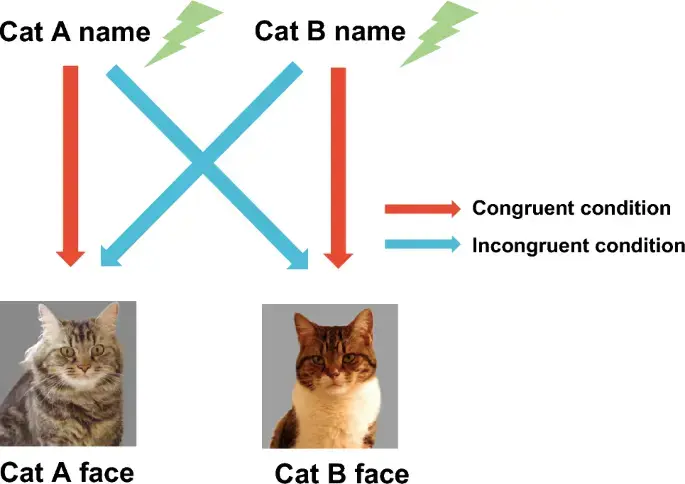69
Humans communicate with each other through language, which enables us talk about things beyond time and space. Do non-human animals learn to associate human speech with specific objects in everyday life? We examined whether cats matched familiar cats’ names and faces (Exp.1) and human family members’ names and faces (Exp.2). Cats were presented with a photo of the familiar cat’s face on a laptop monitor after hearing the same cat’s name or another cat’s name called by the subject cat’s owner (Exp.1) or an experimenter (Exp.2). Half of the trials were in a congruent condition where the name and face matched, and half were in an incongruent (mismatch) condition. Results of Exp.1 showed that household cats paid attention to the monitor for longer in the incongruent condition, suggesting an expectancy violation effect; however, café cats did not. In Exp.2, cats living in larger human families were found to look at the monitor for increasingly longer durations in the incongruent condition. Furthermore, this tendency was stronger among cats that had lived with their human family for a longer time, although we could not rule out an effect of age. This study provides evidence that cats link a companion's name and corresponding face without explicit training.



Two of mine definitely know their names, because they come when called. But the third one… she’s now seven years old and I only conclusively determined that she knows her name a few months ago, after noticing that her ears twitch when I call her. Being the most stereotypical of my cats, however, the only sound that will actually summon her is the sound of a tin of tuna opening.
The ears are a good indicator. One of mine will thump her tail when I call her name. Whump, whump, whump. That’s if she doesn’t come running when I call. The other times, she’s happy to come over and get lots of love.